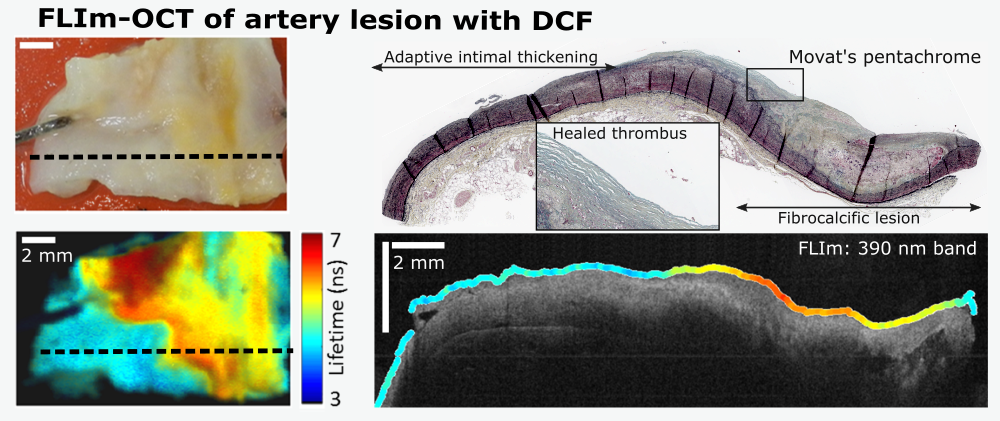
Adapted from B. E. Sherlock et al Opt Lett 42, 3753-3756 (2017)
The complexity of the optical tissue response makes it challenging for a single imaging modality to accurately characterize tissue structure and function. Multimodal imaging platforms that combine two or more modalities in a single apparatus aim to leverage the strengths of complementary imaging techniques to sample a larger cross section of the optical tissue response.
Optical coherence tomography (OCT) is an interferometric technique that acquires depth-resolved images of a sample microstructure. A combined FLIm and OCT platform can be used to acquire an orthogonal dataset that reports both tissue structure and function. Combination of FLIm and OCT is also advantageous because it can be performed via a single double-clad fiber, leading to simple, low profile imaging devices.
Our group published the first implementation of FLIm and OCT using a single fiber optic and is currently developing catheter-based intraluminal FLIm-OCT devices for with applications in Cardiovascular imaging and Tissue engineering.
Collaborators
Dr. Brett Bouma (Massachusetts General Hospital)
Funding
1R01HL121068-01A1
1R03EB025565-01
IP
US20200275828A1: Broadband, freeform focusing micro optics for side-viewing imaging catheters
Publications
- X. Zhou, A. K. Haudenschild, C. Li, and L. Marcu, "Multimodal fluorescence lifetime imaging and optical coherence tomography for longitudinal monitoring of tissue-engineered cartilage maturation in a preclinical implantation model," J Biomed Opt 28, 026003 (2023).